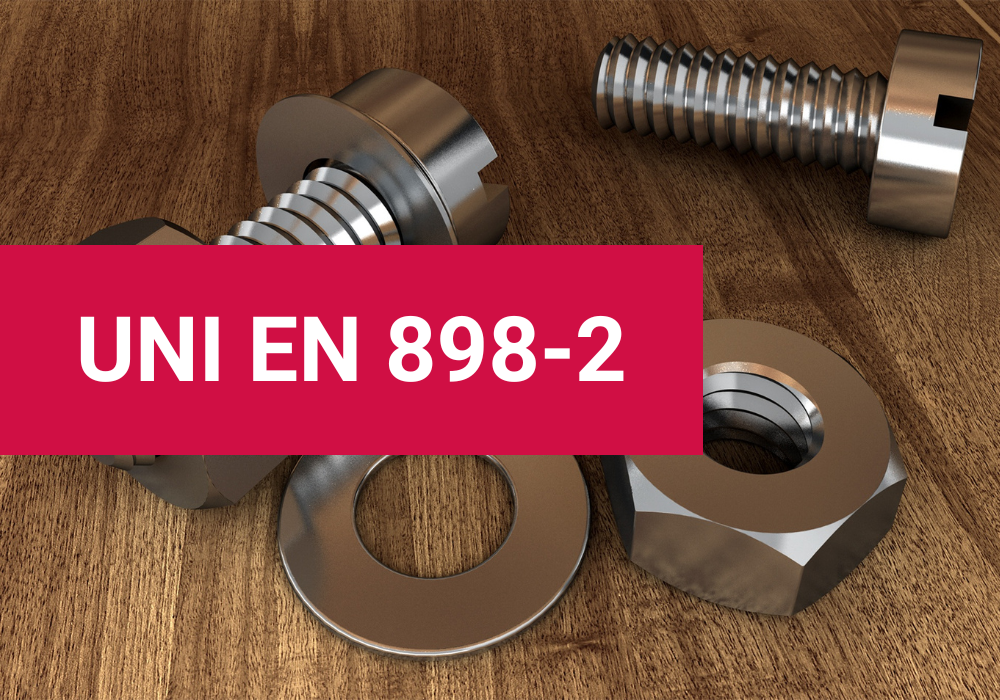
Overview of DIN EN ISO 898-2
The DIN EN ISO 898-2 standard establishes rigorous requirements for testing steel nuts and other ferrous materials. This standard is essential in the metallurgical industry to ensure the safety and reliability of components used in a wide range of engineering applications.
Characteristics of tested materials
Materials tested according to this standard must meet specific criteria in terms of strength, hardness, and load capacity. It is crucial that nuts are able to withstand extreme mechanical stresses without losing structural integrity.
Strength requirements
- Tensile strength: Nuts must withstand a predefined force without breaking.
- Test load: The specified test load in the standard must be applied to verify the nut’s strength.
Hardness requirements
- Hardness: The material’s hardness must be measured and fall within the parameters established by the standard.
- Testing method: Hardness is typically evaluated using an indenter, with standardized procedures.
Testing procedure
The testing procedure defined by DIN EN ISO 898-2 includes several key steps to ensure the accuracy and reliability of the results.
Sample preparation
- Nut selection: Nuts must be randomly selected from production batches to ensure a representative sample.
- Conditioning: Nuts must be conditioned to a standard temperature before testing.
Testing phases
- Load application: The load is gradually applied until the specified value is reached.
- Hardness measurement: Hardness is measured using standardized methods to ensure accuracy.
- Strength evaluation: Strength is assessed based on the material’s reaction to the applied load.
Results analysis
After the tests, the results are analyzed to determine whether the nuts meet the criteria established by the standard.
Data interpretation
- Conformity: Nuts that pass the tests are considered compliant with the standard specifications.
- Non-conformity: Nuts that fail the tests require further analysis and possible modifications to the production process.
Technical specifications of nuts according to DIN EN ISO 898-2
Dimensions and tolerances
- Nut diameter: Specified in millimeters, with a defined tolerance to ensure interchangeability.
- Thread pitch: Essential for compatibility with corresponding screws, also measured in millimeters.
Mechanical properties
- Strength class: Indicates the maximum load capacity of the nut, such as 8, 10, or 12, where a higher number represents greater strength.
- Minimum yield strength: Minimum stress value at which the nut begins to plastically deform.
Materials used
- Carbon steels: Commonly used for their strength and versatility.
- Alloy steels: Used for specific applications requiring additional properties such as corrosion or heat resistance.
Testing requirements
- Tensile test: Determines the maximum tensile load the nut can withstand before breaking.
- Impact test: Evaluates the nut’s ability to withstand sudden loads or impacts.
Surface treatments
- Galvanizing: Commonly applied to improve corrosion resistance.
- Phosphating: Provides better paint adhesion and wear resistance.
Environmental considerations
Operating temperatures
- Temperature range: Nuts must maintain their mechanical properties within a wide range of temperatures, from cryogenic to high.
Operating temperatures
- Chemical compatibility: Nuts must resist various chemical agents, especially in aggressive industrial environments.
Implications for the industry
Conformity to DIN EN ISO 898-2 is crucial for nut and bolt manufacturers. It ensures that their products are of high quality and reliable, a fundamental aspect for safety in numerous engineering applications.
Affected sectors
- Civil engineering: Nuts are used in load-bearing structures where the failure of a single component can have serious consequences.
- Automotive: Nuts are employed in critical components for vehicle safety.
- Aerospace: In this sector, material strength and reliability are vital.
The importance of this standard
Strictly following the DIN EN ISO 898-2 standard is essential to ensure the safety and reliability of steel nuts and other ferrous materials. This practice not only improves product quality but also contributes to safeguarding human safety in various engineering applications.
Cermac Machines for Testing According to UNI EN 898-2 Standard
At Cermac Srl, we are proud to contribute to raising the standards of quality and safety in the industrial components sector. We produce advanced testing machines, specialized in verifying the mechanical characteristics of nuts according to the UNI EN 898-2 standard.
Our machines, made in Italy, are designed to offer precision and reliability, ensuring that every tested nut meets the rigorous quality standards imposed by the standard. Our focus on quality and innovation makes us a reliable partner for manufacturers and suppliers aiming to ensure the excellence of their products.
Consult our machine catalog here or contact our technical experts.


